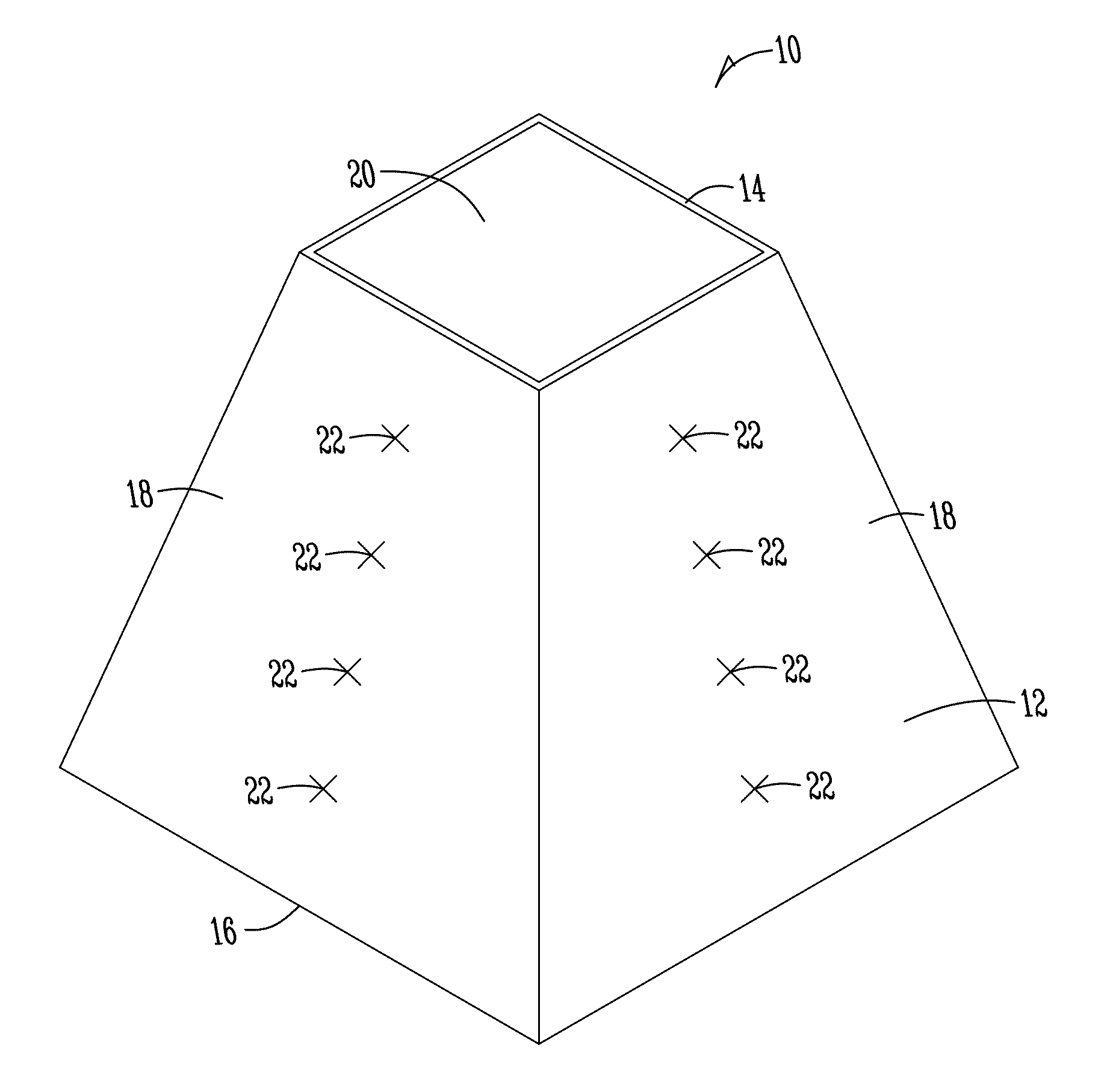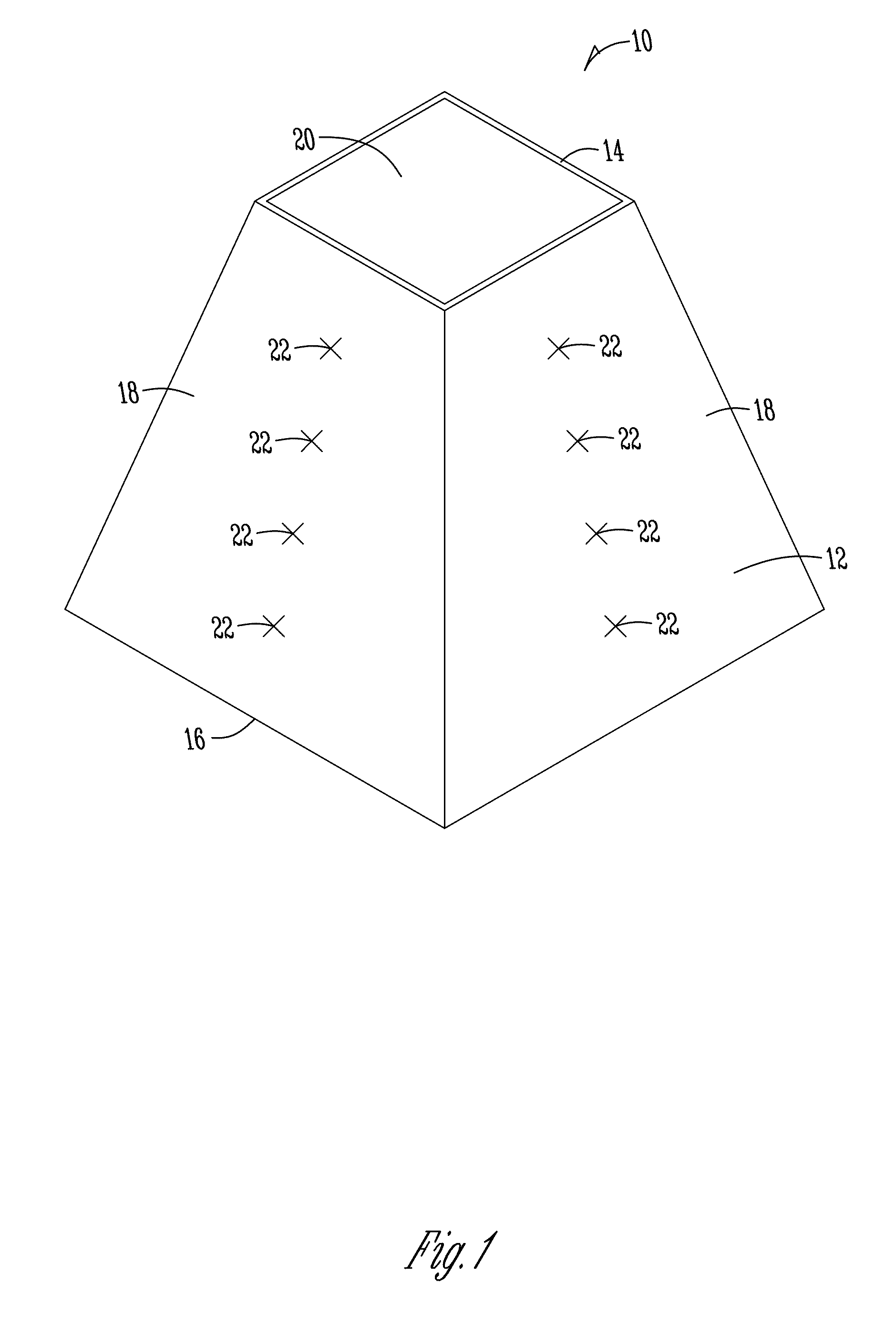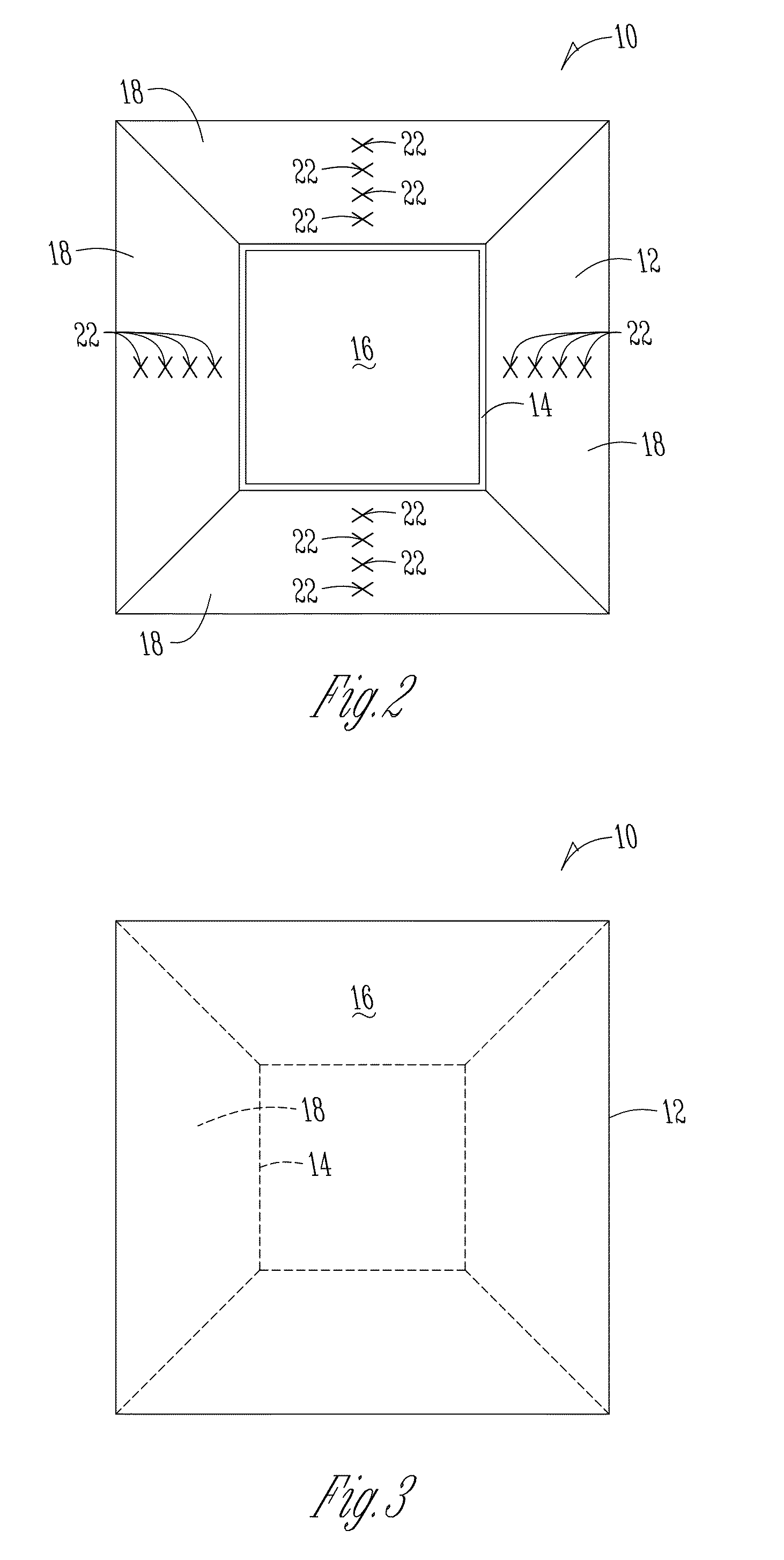Plant cultivating pot
a plant and pot technology, applied in the field of plant cultivating pots, can solve the problems of increasing the time required to dig up the harvest, increasing the cost of planting, so as to maximize the exposure of plants to sunlight, reduce the footprint required for the pot, and reduce the effect of heat dissipation
- Summary
- Abstract
- Description
- Claims
- Application Information
AI Technical Summary
Benefits of technology
Problems solved by technology
Method used
Image
Examples
Embodiment Construction
[0012]Exemplary illustrations of the present invention, namely a plant cultivating pot, are shown in FIGS. 1-6. The pot 10 includes a body, such as a material or fabric body. The material may be plastic, vinyl, or a non-woven geotextile. According to one aspect of the present invention, the pot 10 includes a fabric body 12 constructed from a non-woven geotextile material. The body 12 of the pot 10 includes a top 14 which is open but may be configured to be selectively closed. The body 12 also includes a bottom wall 16 which is closed but could be designed to be selectively openable by alterations to the material defining the bottom wall 16. A sidewall 18 extends between the bottom wall 16 and the top 14, connecting the top 14 to the bottom wall 16 of the body 12. The sidewall 18 is also referred to as a panel, and therefore the body 12 could be described as having a panel 18 extending between the bottom wall 16 and top 14. Each sidewall 18 is connected to another sidewall along a ge...
PUM
 Login to View More
Login to View More Abstract
Description
Claims
Application Information
 Login to View More
Login to View More - R&D
- Intellectual Property
- Life Sciences
- Materials
- Tech Scout
- Unparalleled Data Quality
- Higher Quality Content
- 60% Fewer Hallucinations
Browse by: Latest US Patents, China's latest patents, Technical Efficacy Thesaurus, Application Domain, Technology Topic, Popular Technical Reports.
© 2025 PatSnap. All rights reserved.Legal|Privacy policy|Modern Slavery Act Transparency Statement|Sitemap|About US| Contact US: help@patsnap.com



